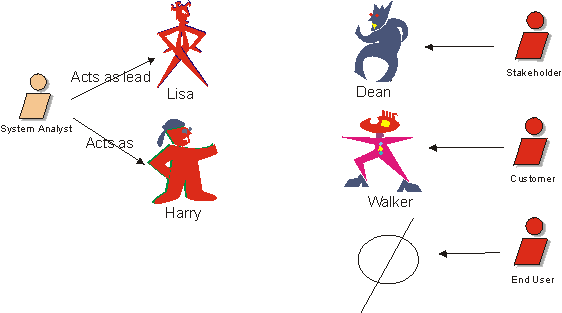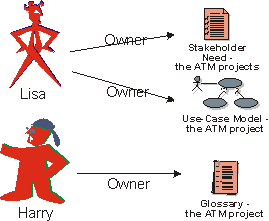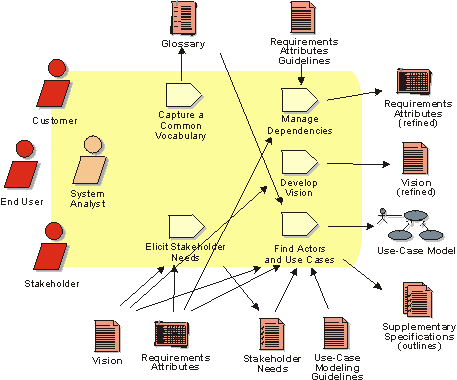Workflow Detail: Understand Stakeholder Needs
Purpose 
The purpose is to collect and elicit information from stakeholders to the project. This information can be regarded as a "wish list" that will be used as primary input to defining use cases and supplementary requirements.
Typically, this is only performed during iterations in the inception and elaboration phases.
The key activity is to elicit stakeholder needs. The primary outputs are collection(s) of prioritized Stakeholder Needs, which enable refinement of the Vision document, as well as a better understanding of the requirements attributes. Also, during this workflow you may start discussing the system in terms of its use cases and actors. Another important output is an updated Glossary of terms to facilitate common vocabulary among team members.
How to Staff 
The project members involved in understanding stakeholder needs should be efficient facilitators and have experience in eliciting information. Of course, familiarity with the targeted technology is desirable, but it is not essential.
Work Guidelines 
The following are sample techniques that can be applied to make sure you collect the correct and relevant information from the stakeholders:
- Interviews and questionnaires
- Brain-storming and idea reduction
- Use-case workshops
- Storyboarding
- Role playing
- Review of existing requirements
Example Project 

During inception, Lisa and Harry act as system analysts. Lisa is appointed to be the lead system analyst, since she has previous experience in conducting various requirements workshops. Dean is one of the champions of the ATM project, and has therefore been invited to act as stakeholder in the workshop. Walker represents one of the ATM operators that will use the new system. They did not invite any end users, but this did not cause any concern since all other members of this group had experience using ATM machines.

Since both Lisa and Harry act as system analysts, they both share responsibility for the resulting artifacts of this step. Lisa is appointed owner of the Stakeholder Needs document and the use-case model, while Harry owns the Glossary.
![]()
